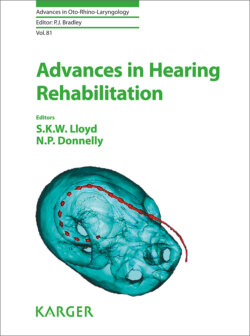Читать книгу Advances in Hearing Rehabilitation - Группа авторов - Страница 50
На сайте Литреса книга снята с продажи.
Device Selection
ОглавлениеThere are multiple factors which need to be considered when selecting an appropriate device (in consultation with the patients). Surgical aspects such as the quality of bone, mastoid size as well as the surgical time and difficulties should all be considered. Poor bone quality leaves patients with an increased risk of failure [17]. While a small mastoid size may mean implantation with a device such as the Bonebridge is not appropriate, especially in children. Preoperative CT planning with 3D reconstruction to assess if implantation is possible (which can be mastoid or retrosigmoid) is recommended for Bonebridge. The length and difficulty of the procedure is a further factor where Oticon’s minimally invasive Ponto surgery has shortened and simplified percutaneous fitting considerably. Patient acceptability is an additional major factor which takes into account aesthetics where transcutaneous devices are generally preferred; and cleaning and care of an abutment where relatively high proportions of patients feel this is an issue [7]. Finally, the audiological outcomes are of importance, with current transcutaneous devices often lacking the power of percutaneous devices. Hol et al. [18] found that hearing thresholds were better via the percutaneous BAHA Divo when compared to the transcutaneous Sophono and Briggs et al. [16] failed to find a significant improvement in speech thresholds in quiet with the use of BAHA attract when compared to Softband.
